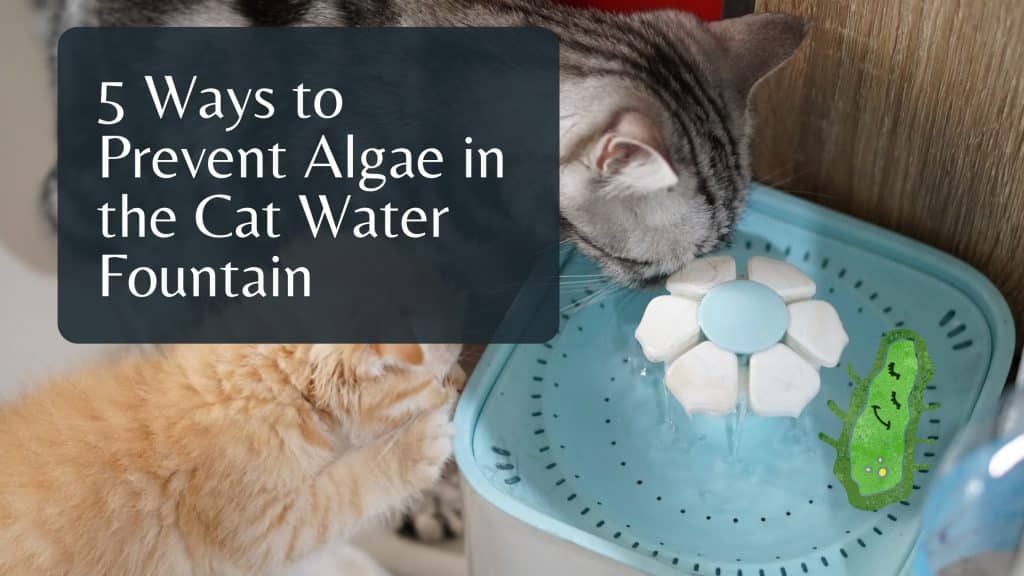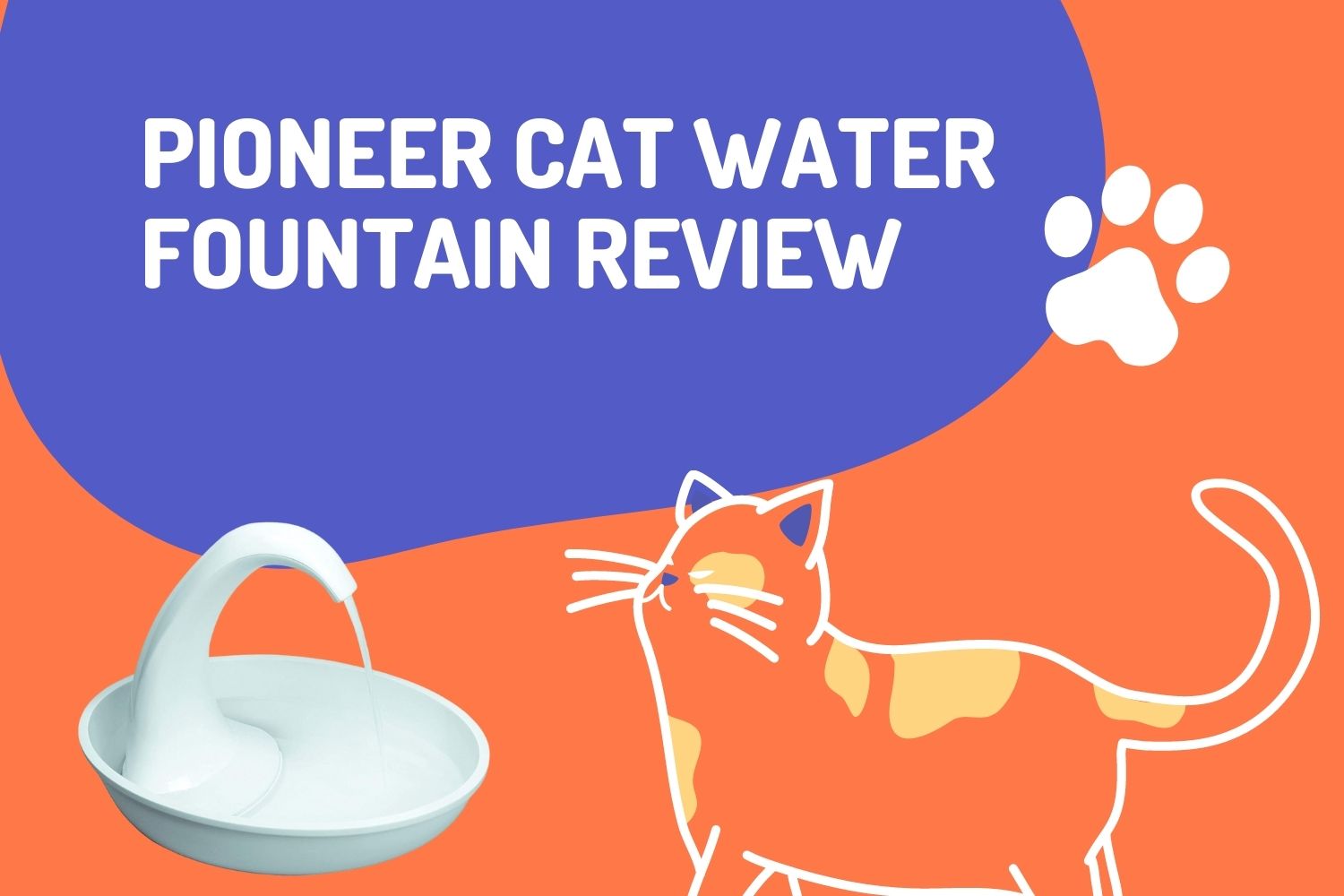
Everyone with a cat at home would agree to the fact that making your cat drink the right amount of water is like hiking Mt. Everest. Cats don’t love slurping on the water as much as dogs do. Add to this algal growth in the water bowl, and it is a recipe for disaster. A great way to make your cat drink more water is to use a cat water fountain. However, even this fountain is no exception to algae infestation.
Cats are especially sensitive to any bad or stinky smell that comes from water infested with algae. So, how would you prevent your cat water fountain from being overrun with algae?
So let’s start looking into ways that can prevent Algae in Cat water fountain!
Before you learn how to prevent algae infestation in your cat water fountain, you need to learn how this algal growth happens.
Note: A best cat water fountain is a device that provides fresh, moving water for cats. A cat’s instinctual response to a running stream of water is to drink from it, and the sound of flowing water may entice your pet to use the fountain.
Why do algae grow in the cat water fountain?
Algae spread through spores from one place to another. These spores are very light and can easily travel through the air. Although they travel from one spot to another with ease, they need the right growing conditions to spread throughout. A cat water fountain is the best place with the optimum conditions for the algae to thrive.
Algae are mostly photosynthetic. It means they need sunlight and carbon dioxide to grow, similar to plants. Apart from that, they also need water, nitrogen, phosphorus, and nutrients to thrive. So nutrients are abundant in a cat water fountain, especially if you use tap water.
The heavy moisture content ensures that the algae population has the right conditions to thrive. Plus, the food particles that fall in the fountain when the cats drink can speed up the algae growth in the water fountain.
If you happen to keep the water fountain in a place where the sunlight falls, it could further accelerate algae growth. The algae growth can be poisonous for the cat and lead to problems like vomiting and diarrhea.
Now that you know the factors that could lead to algal growth, here are some tips to help you prevent its spread.
5 Ways Avoid Algae Growth in the Cat Water Fountain
1-Routinely Change the Filter
Every cat water fountain available in the market comes with a water filter. While some fountains have multiple filters, others would have one, depending on the brand. These filters are designed to keep the detritus objects away from the water. It includes dust particles, cat hair, or any food particles that might fall in the water.
Although these filters are meant to keep the water clean for long, there is a limit to how long they can clean it. Therefore, the filter must be changed regularly to clean the water every time your cat drinks.
Most manufacturers advise that you change your filter every 2 to 4 weeks, depending on the number of cats you have at your home.
However, make sure you buy filters only from the same brand that the water fountain belongs to. Otherwise, you might land on a substandard filter that goes bad only after a week or so. Make sure you look through the reviews and invest in a quality filter for your fountain.
2-Keep it Away From Sunlight
A major factor that leads to the abundant growth of algae in the cat water is exposure to sunlight. As mentioned earlier, algae are similar to plants. It needs sunlight to conduct photosynthesis.
Only when they do this can they grow abundantly. So, if you have a habit of keeping the cat water fountain close to the door or by the window, try to avoid that. Also, don’t place the fountain in a room that is full of natural light.
Even a place with indirect sunlight would work if you cannot find a completely dark space.
3-Clean the Cat Water Fountain Frequently
Now, this might seem obvious. However, it would surprise you how conveniently cat owners forget to clean the fountain. Frequent cleaning of your cat water fountain will help avoid algae formation. This effective and hygienic practice will reduce any chance of algal growth.
When cleaning the cat water fountain, you need to unplug the water pump initially. Now, boil some water and pour it over the water fountain. However, this step must be skipped in case your cat fountain is made up of plastic. Therefore, this step is perfect for metal or ceramic material.
Else, use scrubbers to rub off the algae from the fountain. Make sure you use gloves to clean off the algal growth. The warm water method helps with the faster removal of the algal growth in your pet water fountain.
Next, use some chemical-free soapy solution to clean the fountain and finally rinse off with fresh water. You can also use a long bottle brush to reach the hard-to-clean areas of the cat water fountain.
4-Change the Water Regularly
Like you do for your aquarium, it is important to clean the cat water fountain. If possible, changing the water every few hours is a good habit if you have several cats at home. If you have one cat or just two, you can change the water daily to avoid buildup issues.
Failing to change the water regularly leads to dirt and algae buildup. It is not only harmful to your cat but also deteriorating for the fountain. It can cause water blockages or similar issues in the fountain.
It might seem too much for you, but it is a great habit and helps your cat stay healthy. Contaminated water can lead to several health issues that might require immediate veterinary attention.
Just like you wouldn’t want to drink stale or infested water, your cat should also be provided fresh water to drink from the fountain. Also, try to use filtered water as opposed to tap or municipal water.
Filtered water consists of fewer impurities as opposed to other sources of water. It can ensure that there is a reduction in algal growth.
5-Avoid the Use of Plastic Fountains
If you do have the budget, avoid cat water fountains crafted from the use of plastic. Depending on the brand, they can be expensive or cheap in your pocket. However, materials such as porcelain or stainless steel are perfect for use in fountains.
Although stainless steel or porcelain material could be a bit on the pricier side, they are way better than their plastic counterparts in terms of sturdiness, longevity, and reduction in the algal buildup. Plastic is prone to algal buildup because it is highly porous compared to these materials.
Besides, plastic is also prone to getting cuts and dents that could serve as a growth spot for algae. So, stick to purchasing porcelain or stainless steel cat water fountain.
Home-Made Solutions for Algae Build-Up Prevention in Cat Water Fountain
There are several options available in the market for cat water fountains to be cleaned. However, these chemical cleaning agents might not be right for something your cat drinks out of. So, it is better to stick to homemade solutions that are safe for your cat’s health.
Here is a list of techniques to reduce any algal buildup in the cat water fountain.
1-Use Baking Soda
Baking soda works great if your cat’s water fountain has a heavy algal buildup. To follow this cleaning technique, you need first to wash the water fountain with fresh water gently. Next, sprinkler the baking soda all over the fountain and let it sit aside for half an hour or more.
After this, gently scrub the fountain with a sponge and rinse off the bacterial growth with the help of freshwater.
2-Use Vinegar
Another way you can clean off the dirt and algae growth in your cat’s water fountain is by using vinegar. Spray vinegar on the water fountain. If possible, disassemble the fountain and thoroughly spray the vinegar all over.
Let it sit for a minimum of one hour or more. It will help loosen the algae from the surface and ensures that you can rub it off with ease. Then, use a metal scrubber or sponge to rub off the algae from the surface of the cat water fountain.
Finally, rinse off the algae and other debris using freshwater.
3-Use a Mild Detergent
Finally, you can try to clean the cat water fountain by opting for a mild detergent. Use a combination of warm water and detergent to rinse off the algae from the water fountain.
Ensure that the detergent is rinsed off completely to ensure that it doesn’t make its way into your cat’s water.
If you learn how to disinfect cat water fountain thoroughly it will help you to prevent future health challenges. And always has knowledge about why are cats scared of water so you can identify the potential problems and can solve them amicably.
Conclusion
To deal with algal growth in the cat water fountain, you need to ensure that the fountain is deep cleaned at least every 15 days. However, in general, cleaning must be done every week to ensure your cat gets only freshwater.
Also, remember that the filter should be replaced every month depending on the fountain’s brand. You cannot control your cat’s habit of dropping food bits in the fountain. But, as a pet’s owner and caretaker, you must ensure that your cat is healthy by all means.






